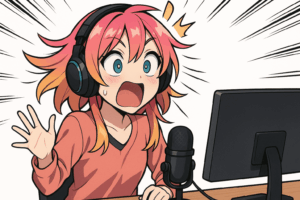Low poly humans are a popular choice for game developers and 3D artists due to their simplicity, flexibility, and performance efficiency. Whether you’re creating games, animations, or virtual environments, low poly human models can help you achieve great results without overloading your system resources. In this guide, we’ll explore how to work with low poly humans in MA, OBJ, FBX, and blend formats, and how to effectively use them in various projects.
Understanding Low Poly Models
Before diving into the details of MA, OBJ, and FBX formats, it’s essential to understand what low poly models are. Low poly refers to 3D models that use a relatively low number of polygons. This makes them lightweight, meaning they require fewer resources to render in games and other applications. Despite their simplicity, low poly models can be highly detailed and visually appealing, especially when paired with good textures and lighting.
Low poly humans are commonly used in games, virtual reality (VR), and augmented reality (AR) applications. Their reduced complexity allows for smoother performance in real-time environments like video games. They are also easy to customize, making them a great choice for creators who need flexibility. Low poly models include a variety of characters such as low poly male models, which are popular in game development and animation.
File Formats: MA, OBJ, and FBX
When working with low poly human models, you’ll encounter different file formats. Three of the most common formats are MA, OBJ, and FBX. Each has its unique characteristics and is suited for different workflows. Each format allows you to set specific parameters, such as dimensions and textures, to customize your low poly human models.
MA (Maya Ascii)
MA stands for Maya ASCII, a file format used in Autodesk Maya, a powerful 3D animation and modeling software. These files contain data in a readable text format, which can be easily modified or edited. Low poly humans in MA format are often used by animators and game developers who prefer to work in Maya. This format allows for efficient rigging and animation, making it a popular choice for rigged low poly models.
OBJ (Object)
The OBJ format is one of the most universally accepted formats for 3D models. It is widely supported by most 3D software, including Blender, 3ds Max, and Maya. OBJ files store geometry information, such as vertices, textures, and materials, but they do not contain animation or rigging data. Low poly humans in OBJ format are ideal for importing into various programs, making it easy to modify or combine models in different scenes. Whether you’re working in a modeling tool or a game engine, OBJ low poly human models are versatile and easy to use. Additionally, low poly man models in OBJ format are readily available for download, offering a range of styles from realistic to cartoonish.
FBX (Filmbox)
FBX is a popular format for 3D models that supports more than just geometry and textures—it also supports rigging, animation, lighting, and cameras. Low poly humans in FBX format are commonly used in game development because the format allows for seamless integration with game engines like Unity and Unreal Engine. FBX files are also compatible with other software, making it easier to exchange data between programs like Blender, 3ds Max, and Maya.
How to Use Low Poly Humans in MA, OBJ, and FBX Formats
Now that we know the differences between these formats, let’s dive into how to use low poly humans in your projects.
Step 1: Downloading Low Poly Human Models
You can find a wide variety of low poly human models online, many of which are available for free download. Websites like TurboSquid, Sketchfab, and CGTrader offer collections of low poly humans in different formats, including MA, OBJ, and FBX. When downloading models, ensure that the format you choose is compatible with the software you’re using. Some models come fully rigged, while others may require rigging depending on your needs.
Step 2: Importing Models into Your Software
Once you’ve selected your low poly human model, the next step is importing it into your preferred 3D software.
- For MA files, you’ll need to use Autodesk Maya. Simply go to “File” > “Open” and select the MA file.
- For OBJ files, most 3D software supports this format. In Blender, for example, you can go to “File” > “Import” > “Wavefront (.obj)” and select the file.
- For FBX files, use the appropriate import option in your software. In Unity, you drag and drop the FBX file into the project folder, and it automatically will add to your assets.
Step 3: Customizing and Rigging the Models
Once imported, you can modify your low poly humans to suit your project. You might want to adjust the character’s size, add textures, or even animate the model. If the model isn’t rigged yet, add a rig (skeleton) to enable movement. Maya and Blender both provide tools for rigging characters, and many downloadable models come pre-rigged.
For games, rigging is crucial because it allows the character to move within the game environment. If you’re using an FBX model, it’s likely to already have animation data, making it easier to integrate into game engines.
Step 4: Exporting Models for Use in Games or Animations
Once your low poly human model is ready, you can export it in the desired format for your project. For example, if you’re using the model in Unity, you may want to export it in FBX format since Unity supports FBX natively. On the other hand, if you’re creating a static scene in Blender, OBJ or MA formats might be more suitable.
Step 5: Using Models in Your Game Engine
If you’re working on a game, integrating your low poly humans into the engine is a straightforward process. Game engines like Unity and Unreal Engine have built-in support for FBX models, and you can easily apply animations, add textures, and customize your character’s movements.
Conclusion
Low poly human models are an excellent asset for anyone working in game development, animation, or virtual environments. Understand the differences between MA, OBJ, and FBX formats. Knowing how to use them effectively enhances your projects with lightweight and customizable characters.



